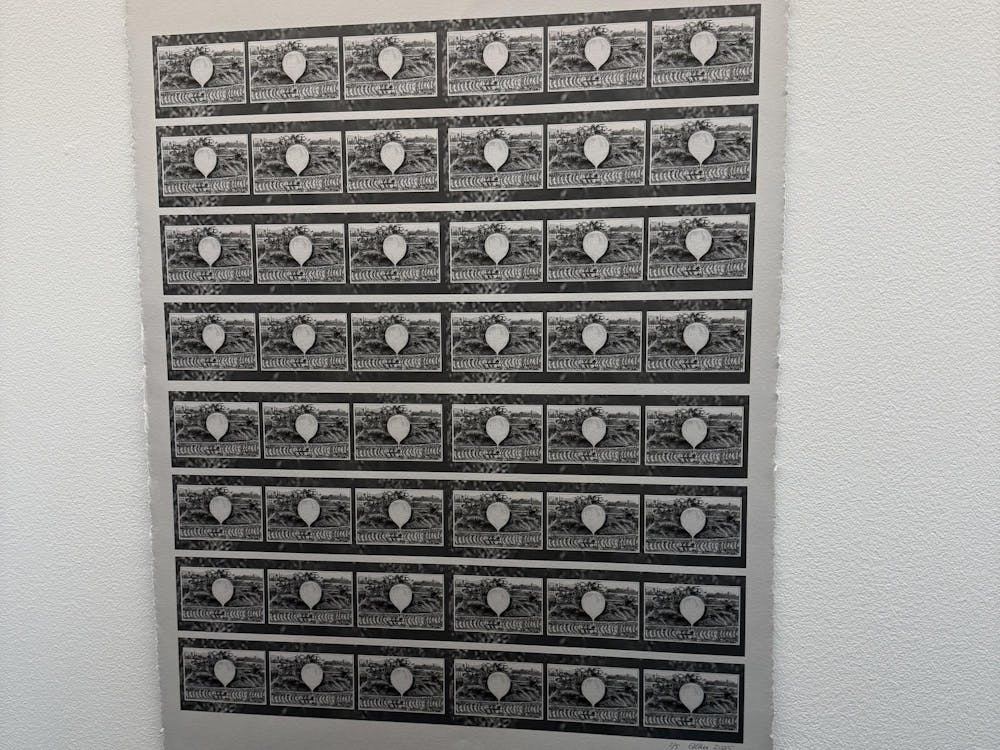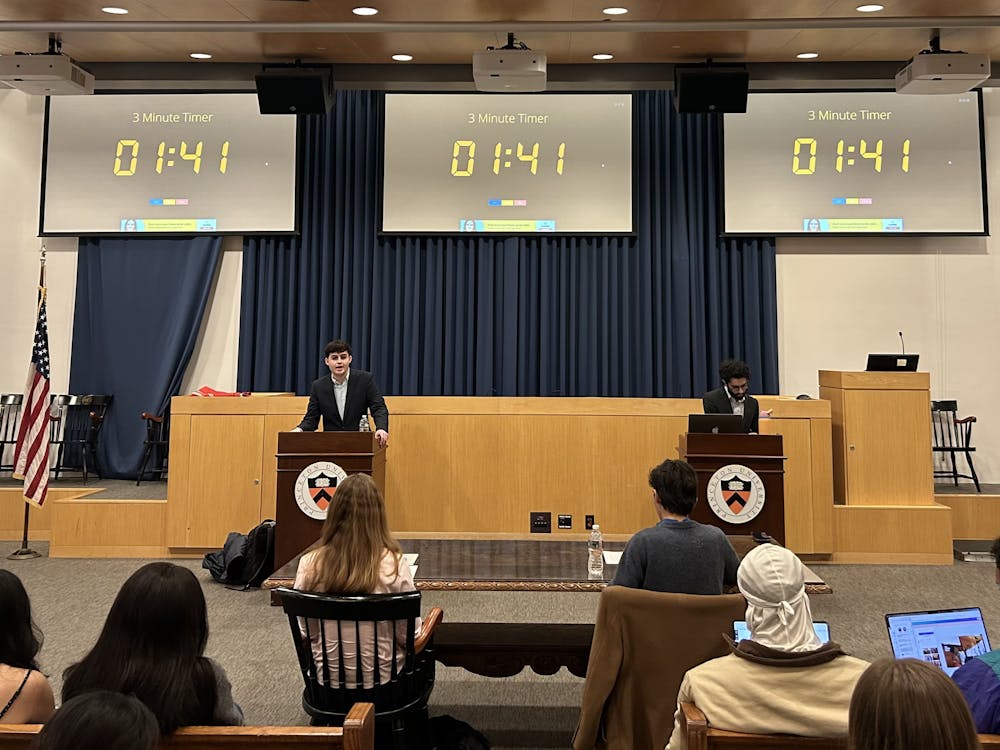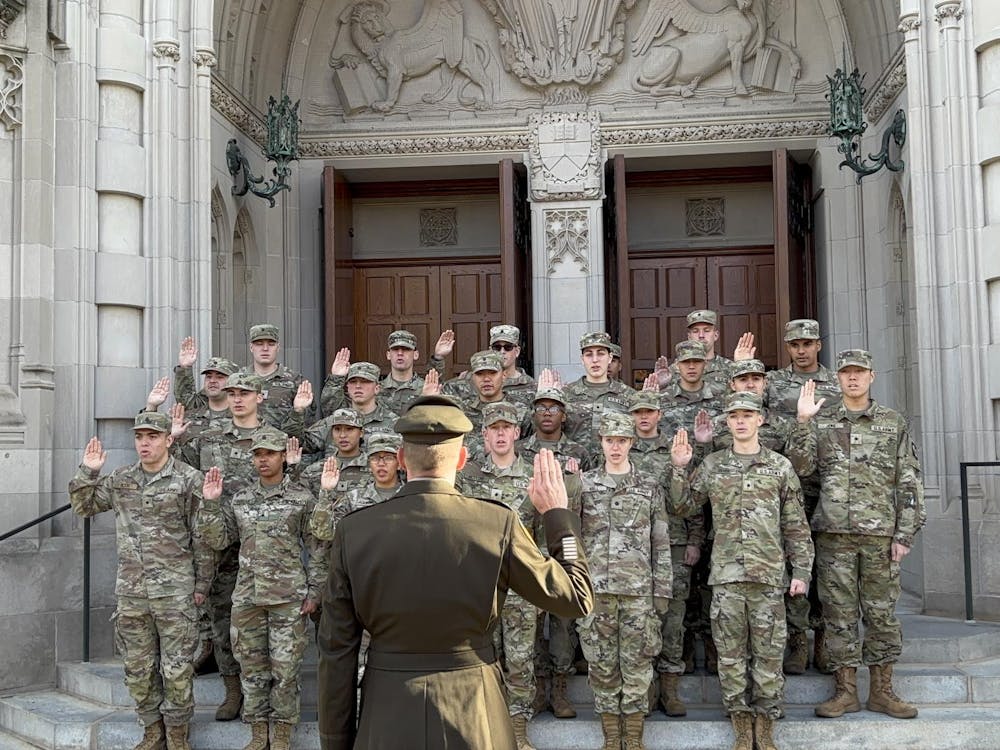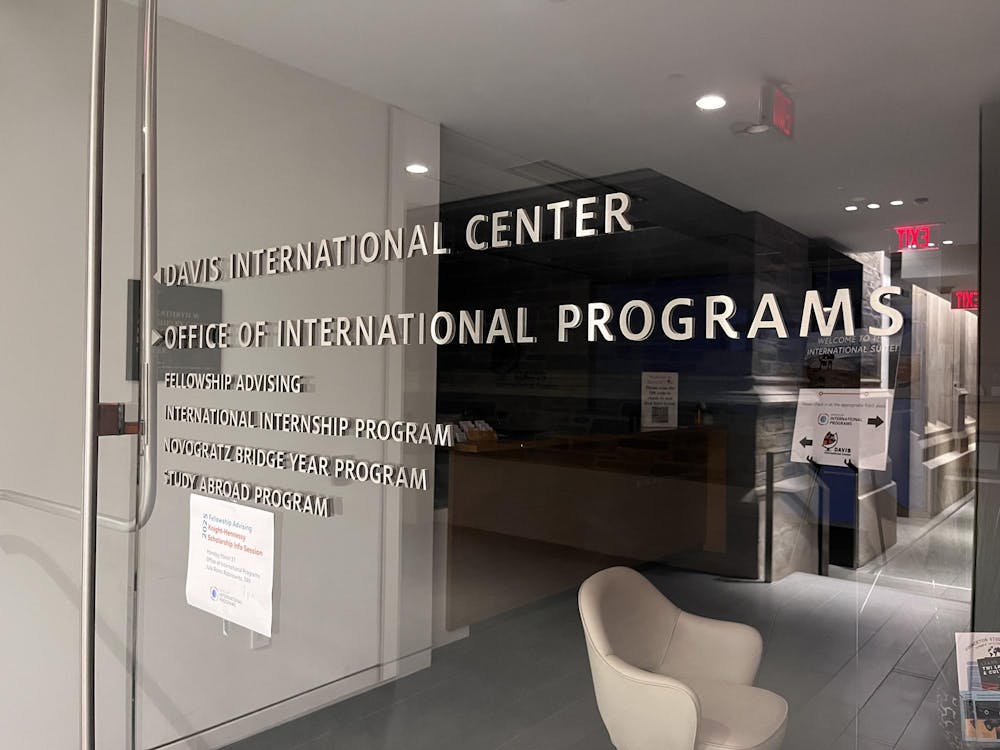Nestled in the Hurley Gallery at the Lewis Arts Complex is a monochromatic world of spider webs and historical metaphors — a beautifully haunting archive of political warfare. This exhibition, “spinnerets,” is the work of Princeton Arts Fellow Gi (Ginny) Huo and is open for the public until Oct. 24. It is a well-rounded installation of multi-media experiences, from steel sculptures to archival photographs to 16mm film.
The exhibition is named after the spider’s silk-producing organ and explores the spider’s survival techniques of camouflage and ballooning, using air and its silk to travel long distances. The exhibit’s art, drawing inspiration from the spider, is also metaphorical for the balloon war that erupted between North Korea and South Korea on May 28, 2024. This is no feel-good exhibition; it is a learning experience.
For many years, South Korean activists and defectors had sent balloons with leaflets criticizing the North Korean government, but for the first time, they were met with a response — more than a thousand balloons floating back. These balloons contained manure and trash, and, as a result, tensions escalated.
The film caught my attention as I walked into the exhibit. It was eerie and unsettling, with sounds of footsteps, machine noises, and crackling. In a quiet, high-ceilinged room, the audio echoed, amplifying the suspense.
The film was projected onto a corner of the room, where both walls would reflect the same scene of the spider and its web at certain points. Two sides mirrored each other in a separated world, just like the Korean Peninsula. The grainy texture of the visuals and the horroresque auditory effects evoked war, and a constant thumping like a soldier’s footsteps kept the pace going. It was oddly captivating because its warped visuals made me constantly ponder what it actually was I was looking at — a plant?
The stark, white walls also unnerved me as I walked through. Each wall piece was monochromatic, using graphite or archival inkjet, adding to the sensation of coldness.
My favorite piece, near the back wall, was “ballooning i (print),” a set of archival inkjet prints on cotton paper. The piece contains a miniature image of what seems to be a large balloon, almost resembling a hot air balloon — starkly white against the gray background. The image is repeated in rows and columns, representing the sheer mass of balloons that flew across borders.
The piece mirrored Andy Warhol’s “Campbell’s Soup Cans” but was darker and grimmer. While Warhol’s repetition represented the relentlessness of mass consumption, Huo’s repetition seemed to communicate relentless, mechanical action. At some point, there are so many balloons that they merge together, and sides blur.
Huo’s sculptures also catch the eye. Made of steel and arranged as a web, they force viewers to bend down and physically immerse themselves. Each has a hook extending from the base, framing another print. In these sculptures, the balloons seem to be traveling long distances over the ocean.
Walking into the exhibition, I was glad to have some background on the balloon war between North and South Korea. Without it, the pieces would have been repetitive and confusing. But with history to map the exhibition onto, the piece filled out an emotional side of the story.
As I exited the exhibition and emerged from the Lewis Arts Complex, I was shocked by the brightness of the world. Inside “spinnerets,” I had been encased in the grim yet fascinating webbing of spiders and psychological warfare, surrounded by nothing but stark white walls and my own footsteps. The resounding audio of the film still looped in my mind and kept reminding me of floating balloons.
The exhibition is free and open to the public from 10 a.m. to 8 p.m. and is an excellent opportunity to take a moment to learn more about what balloons and spiders are truly about. I recommend going by yourself and taking the time to marvel over each intricate piece and sensation.
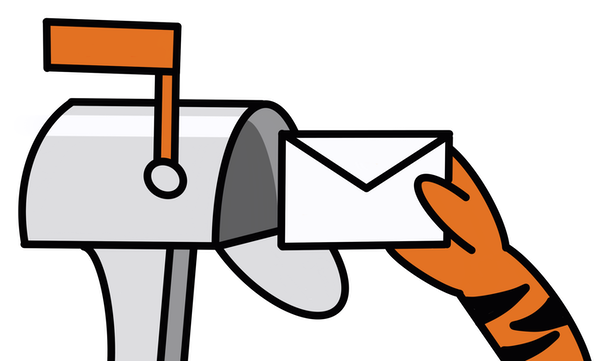
Kate Chun is a writer for The Prospect and part of the Class of 2029. She can be reached at kc6370@princeton.edu.
Please send corrections to corrections[at]dailyprincetonian.com.





